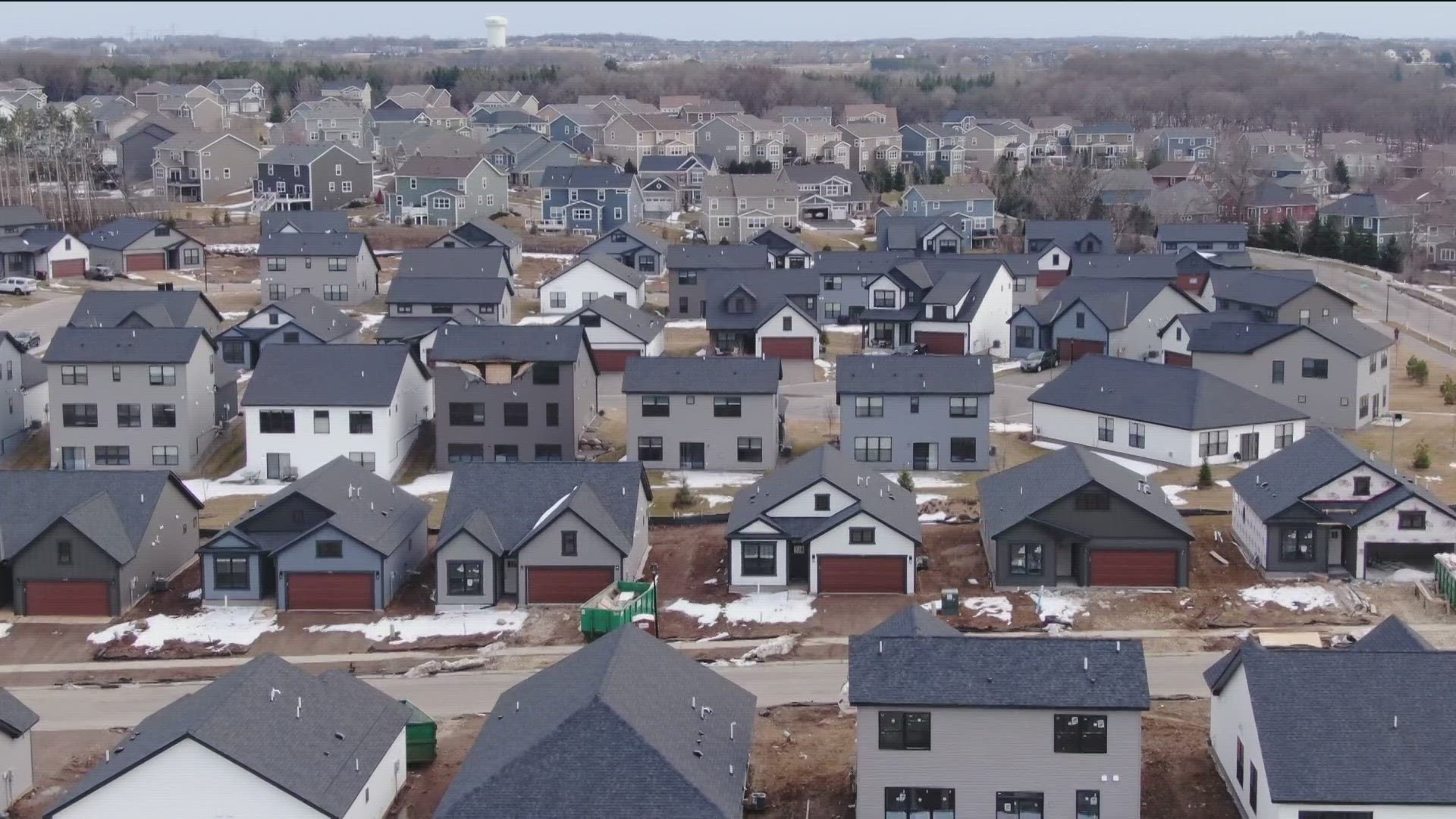MINNEAPOLIS, Minnesota — New data suggests efforts to build up Minnesota's housing inventory are succeeding, but there's more to the story.
According to Housing First Minnesota, metro homebuilders are starting spring strong. 405 permits were pulled for single-family homes in March — a 37% increase compared to the same time last year.
"We continue to see strong permit numbers through the year. I think some of the sharp increases... is due also to the fact that we had a very slow year, last year. So we're very much on pace with more of a 2019, 2018, more of a regular pace compared to kind of the frenzy we had following 2020," explained Katie Elfstrom, vice president of marketing and communications for Housing First Minnesota.
Elfstrom said they saw lower numbers in 2023 because, "Interest rates went up the fastest they've ever gone up. I think homebuyers really... were on pause. They really were unsure of if they were able to find a home, if they could get into a home."
Housing First Minnesota represents more than 900 builders, remodelers, developers and industry supplies across the state.
"I know we are short over 100,000 homes in this market... and I think that the strong permit activity we're seeing is builders responding to that and really seeing a need in this market," Elfstrom said.
According to Elfstrom, builders are now focusing more on move-in ready homes.
"More people want to move directly into that home. They don't want to wait for the home to be built. They want to know my interest rate is this," she said.
The Keystone Report looks at building permit data provided by participating cities. For example, Minneapolis is included but St. Paul is not.
Woodbury had the highest numbers for permits in March and year-to-date. For March permits, the top three cities were Woodbury (40), Lakeville (33) and Maple Grove (28).
Despite strong numbers for single-family homes, multifamily construction permits were pulled for just six units in March — a 168% decrease compared to the same time last year.
"While homebuilding continues at a strong pace, affordability and supply challenges remain in our housing market," said James Vagle, CEO of Housing First Minnesota, in a press release. "These issues must be addressed by the legislature this session."
"We have a massive housing shortage and that's leading to higher prices, shortage of demand — especially for things like starter homes or seniors wanting to downsize — and rents that continue to escalate," said Rep. Michael Howard (DFL-Richfield).
Rep. Howard, chair of the Housing Finance and Policy Committee, was joined by a bipartisan group of legislators and housing advocates back in February to announce the Minnesotans for More Homes Initiative (HF 4009/SF 3964).
The legislation aims to fix the state's "missing middle" housing supply which includes everything from duplexes to courtyard apartments.
"If you could boil our housing challenge down to one problem, it's that we simply do not have enough homes. So the Minnesotans for More Homes agenda is a mix of policies that will help unlock the production of the homes, especially the kinds of homes that Minnesotans desperately want but right now can't find," Rep. Howard said.
The legislation, among other things, would allow for multifamily housing by-right in commercially zoned districts.
"A lot of communities are going this direction and we see more development that's that mixed-use housing that includes some commercial and some housing," Howard said. "But there can be local barriers that make it hard to build those kinds of homes and there can be a lengthy process that ends up shelving a lot of that development, especially affordable housing development."
It has received some pushback, including from the League of Minnesota Cities, Coalition of Greater Minnesota Cities, Metro Cities, Minnesota Association of Small Cities, and the Municipal Legislative Commission.
In a letter, dated Feb. 20, 2024, from the organizations, it said, "Zoning is hyper local as is each community's locally identified housing needs, public infrastructure capacity to accommodate new density, and advancing other individual community goals including historic preservation and protection of natural resources. While housing is a statewide issue, addressing housing affordability and availability must continue to be locally driven to account for these nuances."
Howard said they have worked closely with cities, saying, "We want to make sure that we're allowing for new housing that's desperately needed to come in, but also in a way that's going to work well for the community that exists. So we have things like height limits and that would sort of prevent a very large multifamily development from showing up right next to a neighborhood. But we also have, within that, sort of rules of play that will reduce some of those barriers so that we can build housing that makes sense."
The Minnesotans for More Homes Initiative has two bills. One deals exclusively with building multifamily housing in commercial districts. Howard said both bills have at least one more committee stop before they could get to the floor for a vote.
Watch more local news:
Watch the latest local news from the Twin Cities and across Minnesota in our YouTube playlist:

